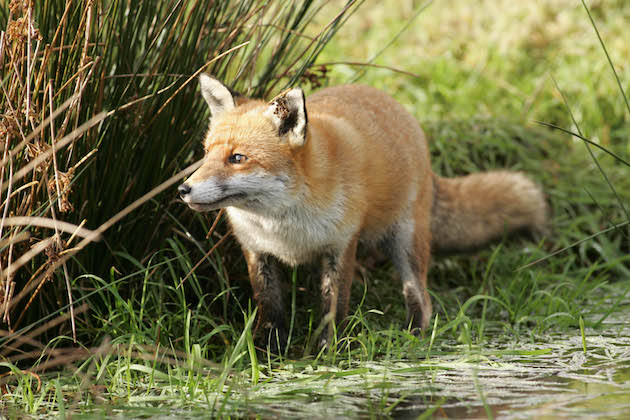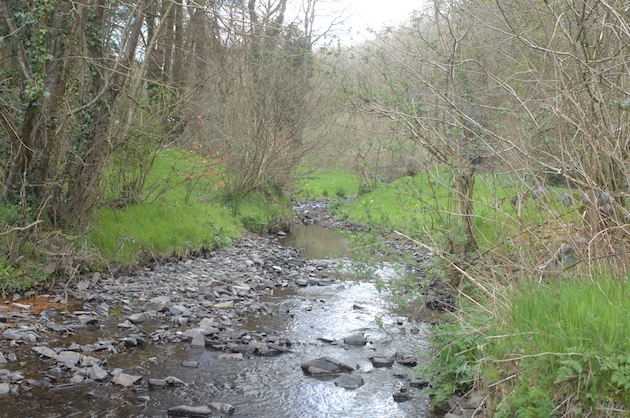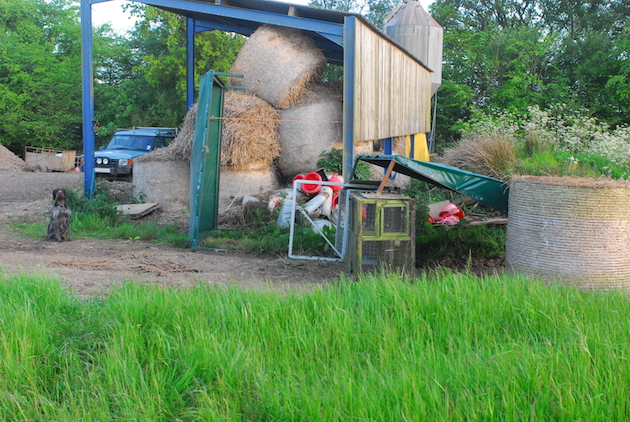How to control foxes when they’ve become lamp shy
Lamping may be one of the most efficient ways to kill foxes but if you miss then, you’ll have created…
The countdown is on for The British Shooting Show – book tickets online today and save on gate price!
 Fox
Usd 27 may 15 on your shoot
Fox
Usd 27 may 15 on your shoot
• Do your best to keep the wind in your face as that way you’ll be approaching from downwind
• Avoid wearing anything perfumed, as it will signal your presence long before you arrive if it catches
on the wind
• Putting down smelly bait can
help mask your own scent
• Remember, it is not where the wind is blowing where you are that counts but what it is doing where your quarry is. This may not be the same thing
• When there’s little sign of a breeze, light debris (chaff) or talc can be used with good effect to determine which direction it’s blowing in
• There are two basic types of scent – that which travels in the air, and that which lies on the ground. Unfortunately for us, foxes are adept at distinguishing both
• I have seen foxes turn tail the moment they’ve encountered my (ground) scent trail, even though it was an hour old
• Airborne scents tend to disperse quickly in open areas, but those at the bottom of a valley can be trapped for some time, especially if there’s a lot of cover to block the wind

Ground scent won’t cross water but air scent will
Urban foxes are so used to mankind they almost completely ignore us but their country cousins need little more than the slightest whiff of human before they’re off over the horizon.
Getting yourself positioned correctly with regard to the wind is therefore of critical importance to anyone tracking foxes who wants to get close to Monsieur Le Reynard.
On some days there is little doubt as to what the breeze is doing – it’s strong and consistent, blowing from one direction all day and night. Under these circumstances, things can be relatively straightforward.
On other occasions, however, it can chop and change in moments, and always seemingly just as you’re about to close in on your quarry.
There is a third variation on the theme, and that is when there doesn’t seem to be any wind at all. This can be one of the most frustrating situations, and you can never be quite sure where your scent trail is going without resorting to special tricks.

The breeze will flow around hedges and farm buildings
The simplest is to lick the back of your hand and then hold it up in the air – any breeze cools it, giving you a clue where it is coming from. Some people use a finger but I find this doesn’t always give you as good an indication. Another method is to find some fine debris such as dry grass or leaf litter and throw it up in the air. Watching where it drifts then tells you what you need to know.
When it’s been raining or snowing this doesn’t work, as there’s rarely any dry material to be found. Under these circumstances it pays to have planned ahead by having your own solution in your pocket. This can either be a bag of suitable chaff, such as crushed straw or a small bottle of talcum powder. A puff of the latter will immediately catch on the wind. Some outlets, particularly in the US, market it as a product called the ‘Windicator’.
Lamping may be one of the most efficient ways to kill foxes but if you miss then, you’ll have created…
HOW TO SQUEAK A FOX: Here the Nataional Gamekeepers Organisation tell you how to call in a fox.
A decent rifle, a high-quality telescopic sight and a generous portion of luck are the essential items in the amateur’s…
Another indication of wind direction is to watch the trees, though if you’re hunting in the dark such visual clues will be of little use. A trick for the winter months and the colder temperatures is to huff out a chestful of hot air and track where it goes by lighting it up with your night vision’s infra-red illuminator.
Something else worth taking into consideration is that the breeze will often ‘fall’ over hills towards the valley bottom, even if this is against the predominant wind direction.
It will also flow around hedges, trees and buildings if they are in the way. This can lead to a very confusing picture.
I had a recent experience when I drove to one side of a valley so that I could stop and observe the other. I stood and watched for a few minutes, and although I could see rabbit or two, at first nothing bigger was visible. Gradually, however, a hot shape appeared through the thermal from behind some trees. Bingo! Time to move on.
Scent disperses more quickly in open areas but will flow downhill
Since there was no access through the river between us, I jumped back in the truck and drove around to an appropriate point on the other side of the valley.
Once parked, I went at a brisk pace to get in position but as I began to descend the hill towards my quarry, I realised that the wind had shifted direction and if I wasn’t careful, I’d spook it before I got anywhere close.
Knowing that the field in question has several large dips, I quickly changed course and worked my way below where I believed my target to be. That way it didn’t matter what the breeze did, I’d still be well off its axis. From there on it was a matter of moving slowly and scanning regularly. A minute or so later I had the sticks up, took my shot and it was game over. Had I not been monitoring the wind there’s little doubt in my mind that I’d have lost that particular battle.
Remember, the wind where you are that counts but the wind where your quarry is, which may not be the same thing.
Get the latest news delivered direct to your door
Discover the ultimate companion for field sports enthusiasts with Shooting Times & Country Magazine, the UK’s leading weekly publication that has been at the forefront of shooting culture since 1882. Subscribers gain access to expert tips, comprehensive gear reviews, seasonal advice and a vibrant community of like-minded shooters.
Save on shop price when you subscribe with weekly issues featuring in-depth articles on gundog training, exclusive member offers and access to the digital back issue library. A Shooting Times & Country subscription is more than a magazine, don’t just read about the countryside; immerse yourself in its most authoritative and engaging publication.

